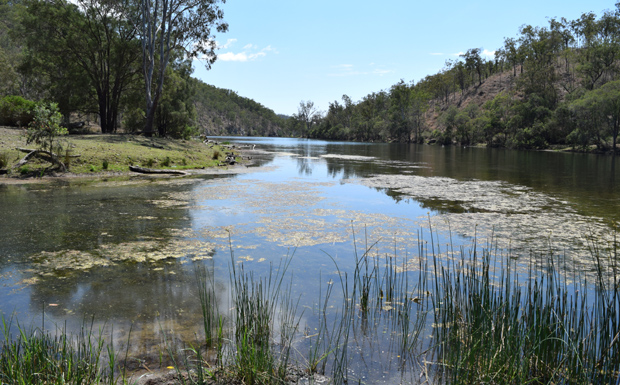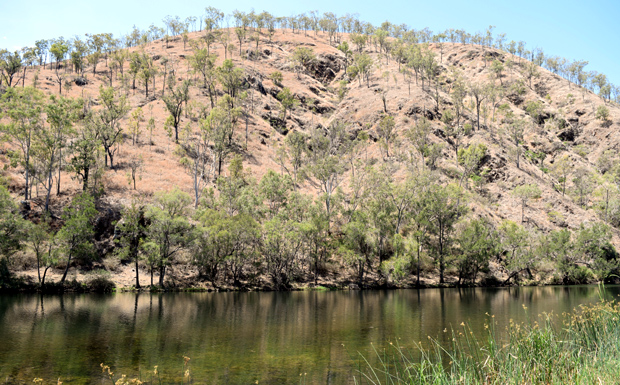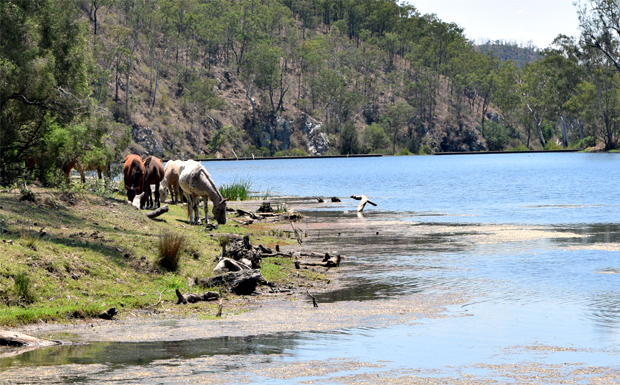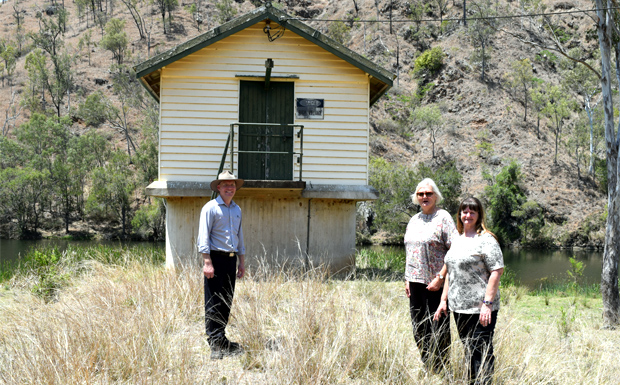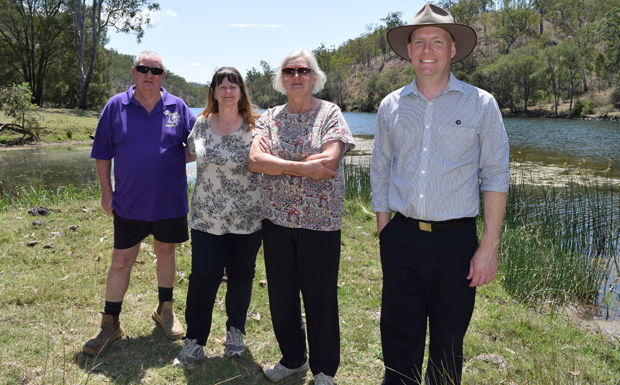
October 24, 2015
It could cost as much as $500,000 to re-open McCauley Weir for recreational fishing and boating, the Nanango Tourism and Development Association was told on Friday.
A delegation from NaTDA was taken on an inspection tour of the weir by South Burnett Regional Council’s Infrastructure General Manager Russell Hood.
As no one has published any photos of the weir since 2004, southburnett.com.au accompanied the delegation so our readers could get a rare glimpse of this little-known part of the South Burnett.
Mr Hood told the group an estimate of $270,000 to re-open the site that NaTDA had been given was probably costed many years ago.
He said $500,000 was a more likely figure now, although the final cost would depend on how much work needed to be done.
The weir is located south-east of Nanango on Cooyar Creek, near the Seven Mile Diggings.
It was built in 1953 and was the original source of Nanango’s reticulated water supply, as well as being a popular recreation spot for local residents.
Public access was blocked with a locked gate by the former Nanango Shire Council when the town’s water supply began to be drawn from Barker Creek and the weir’s water processing facilities were mothballed.
Residents were encouraged to use recreational facilities at Tarong Power Station instead, a practice that continued until that area was closed permanently to the public.
In March 2012, the South Burnett Regional Council voted to continue blocking public access to McCauley Weir because the access road was unsafe.
NaTDA and local fishing groups began agitating for the weir to be reopened in 2013.
Mayor Wayne Kratzmann said at the time he sympathised with their views but with flood repairs in full swing Council had higher priorities.
NaTDA then asked the Council if it would allow them to inspect the site so the group could get a better idea of the problems at first hand.
Friday’s visit – which followed a recent site inspection by several Councillors and senior staff – was offered by Council CEO Gary Wall.
Mr Hood showed the delegation that while the unsealed access road could be navigated by 4WD vehicles, it was narrow and steep and unsuitable for ordinary vehicles in its current condition.
The edge of the road also had several precipitous drops which would require Council to install safety rails if it were to be re-opened for public use.
It would also be necessary to either conduct extensive widening or install automated traffic controls to allow vehicles to move safely up and down the road.
Mr Hood said that if the weir was re-opened for recreation, the State Government would most likely ban the use of motorised boats to preserve the ecological qualities of the area.
He said Council would also be obliged to seal off – or demolish and remove – two old pumping stations on the site which possibly contained asbestos.
Council would also have to conduct regular water testing, carry out garbage collections and other site maintenance work.
To provide full access, Council would also have to rebuild a small bridge on the foreshore which had been destroyed many years ago.
Composting toilets and other amenities would also have to be installed for picnickers.
“This all adds up,” Mr Hood said.
“We can’t just look at the cost of refurbishing the site, the ongoing maintenance will also cost ratepayers money every year.
“That has to be taken into consideration, too.”
Mr Hood said the tourist parks at Bjelke-Petersen Dam and Lake Boondooma were significant revenue earners for Council and the money they generated was ploughed back into Council’s Budget to provide other services to ratepayers.
But McCauley Weir was unlikely to generate any revenue; instead, it would cost ratepayers money.
NaTDA President Gloria Kirkness said she understood the points Mr Hood had raised, and appreciated the opportunity for her and other NaTDA members to see the site.
“It’s a beautiful area and it would be lovely to see it re-opened to the public,” she said.
“But with all the money Council has spent in Nanango over the last few years replacing the Drayton Street bridge and upgrading the CBD, I can understand we’ve probably had a bit more than our fair share and need to pull our heads in for a while.”
Mrs Kirkness said the group would discuss the issue at its next meeting but thanked Council for helping the group get a better understanding of the problems involved.
Related articles:
- NaTDA To Visit McCauley Weir
- Locals Want To See Weir For Themselves
- McCauley Weir Back On Agenda
- Road To Stay Closed … For Time Being
